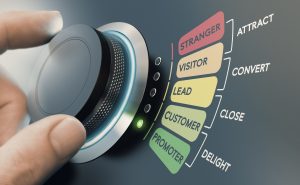
How do we know someone purchased our product or service because of the sponsorship? That’s a good question, but there is unfortunately no easy answer. That said, I’m going to give you all I’ve got. So, here are the strategies I use to attribute sales to sponsorship.
The first thing that you need to understand is that almost all purchases are driven by a combination of marketing messages and channels, and it is not easy to attribute sales to a specific message or call to action. Sponsorship, however, has enough scope and flexibility that you can get closer to that holy grail than you can with most media. In other words, it’s usually easier to attribute sales to a specific sponsorship than to a specific advertisement or social media activity. The key word is “easier”. It’s still not easy or exact, as other factors still come into play.
One of the most important things to take into account is the timeframe. Attributing sales to sponsorship is most effective in the timeframe right around and immediately following the sponsorship. After that, it often falls into the category of “one more thing that contributed to this sale” and that is practically impossible to measure. For the purposes of this exercise, we are going to concentrate on a finite time period, and on activities that are most likely to have been that final trigger that evokes purchase.
One of the easiest ways to attribute sales to a specific sponsorship is to create unique funnels to sale that originate with the sponsorship. These can include:
The starting point is to think of all of your touchpoints with the customer, and all of their touchpoints with your sponsorship, and ask yourself, how can you create a unique interaction, leading to sales, that you can track?
Even if your sponsorship is amazing and your leverage plan even better, the likelihood of every one of your retailers picking it up is low. In fact, you may even decide to work exclusively with one retailer.
One easy way to gauge sponsorship-driven sales is to measure incremental sales in retailers who are participating in the sponsorship-driven activity vs retailers who aren’t. If you see that you are selling 35% more product in retailers who are running the activity, that is indicative of the sponsorship’s contribution to sales. You can also measure the profit on those sales and reflect this figure in dollars.
In retailers who have taken up a retail promotion and/or are selling product with a sponsorship-driven on- or in-pack promotion, shelf (or otherwise sell) both sponsorship-branded and normal products. That way, you can measure incremental sales of sponsorship-branded product vs the identical product in non-sponsorship packaging.
If your company is database-driven (banking, utilities, insurance, travel, etc), you can track increases in customer value for those customers who have availed themselves of sponsorship-driven benefits or activities. These can be benchmarked against customers who haven’t.
You can also track customer value of customers who “Like” your sponsorship-driven page on Facebook, download your app, or otherwise interact via social media. Again, these would be benchmarked against your ambient customer value.
In either case, you can measure a lot of things against benchmarks:
The upshot of all of this is that attributing sales to sponsorship is tough, but there are many ways that you can get strong, benchmarked figures that are indicative of the sales success of your sponsorship activities.
There is lots more about the myriad of ways you can measure your sponsorships in the video tutorial, “Sponsorship Measurement Basics in About 10 Minutes”, found on the Power Sponsorship YouTube Channel. (Yes, I’m aware there are a couple of typos. It’s being updated and redone soon.)
You may be interested in my latest white paper, “Disruptive Sponsorship: Like Disruptive Marketing, Only Better“. Want to build your sponsorship skills and strategies fast? I’ve got comprehensive online sponsorship training for both sponsors and rightsholders. Get the details and links to course outlines and reviews here.
If you need additional assistance with your sponsorship portfolio, I offer sponsorship consulting and strategy sessions, sponsorship training, and sponsorship coaching. I also offer a comprehensive Sponsorship Systems Design service for large, diverse, and decentralised organisations.
Please feel free to drop me a line to discuss.
© Kim Skildum-Reid. All rights reserved. To enquire about republishing or distribution, please see the blog and white paper reprints page.